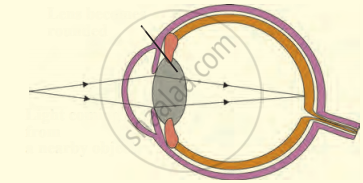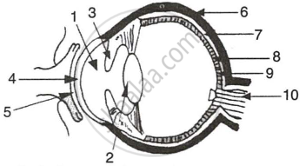Advertisements
Advertisements
Question
The image of an object at an infinite distance is obtained in a real and erect form through a convex magnifying glass.
Options
Right
Wrong
Solution
The image of an object at an infinite distance is obtained in a real and erect form through a convex magnifying glass- Wrong
APPEARS IN
RELATED QUESTIONS
Write the function of the following part of the human eye: Cornea
Define the term.
Power of accommodation of the eye.
Myopia is an example of ______.
What is the name of:
the curved, transparent front surface of the eye?
What job does the pupil of the eye do?
How does the eye adjust to take account of an increase in brightness?
Name the part of our eyes which helps us to focus near and distant objects in quick succession.
Give the scientific names of the following parts of the eye:
a clear window at the front of the eye.
Give the scientific names of the following parts of the eye:
changes shape to focus a picture on the retina.
Fill in the following blank with suitable word:
Most of the refraction of light rays entering the eye occurs at the outer surface of the.............
Fill in the following blank with suitable word:
The part of eye which alters the size of the pupil is............
Fill in the following blank with suitable word:
The iris controls the amount of................entering the eye.
Fill in the following blank with suitable word:
To bring light from a distant object to a focus on the retina of the eye, the convex eye-lens needs to be made..........
The eyes of a person are focused (i) on a nearby object, and (ii) on a distant object, turn by turn. In which case:
the focal length of eye-lens will be the maximum?
Why does it take some time to see objects in a dim room when you enter the room from bright sunshine outside?
What happens to the size of pupil of our eye (i) in dim light (ii) in bright light?
If you walk from a dark room into sunlight and back again into dark room, how would your pupils alter in size? What makes this happen?
Explain why, when it is getting dark at night, it is impossible to make out the colour of cars on the road.
What are the advantages of having two eyes instead of just one?
Give the main function of the following:
Three semicircular canals
Give the main function of the following:
Retina
Differentiate between:
Retina and Choroid.
Name the following:
Yellow spot and ciliary muscles are found in.
Give Technical Term:
The adjustment of the eye in order to obtain a clear vision of objects at different distances
State the Function:
Cornea
Name the capacity of the eye lens to change its focal length as per need.
The following figure show the change in the shape of the lens while seeing distant and nearby objects. Complete the figures by correctly labelling the diagram.

______ is tough and thick white sheath that protects the inner parts of the eye.
The larynx has fold of tissue which vibrate with the passage of air to produce sound.
When light rays enter the eye, most of the refraction occurs at the ____________.
Explain the structure and functioning of Human eye. How are we able to see nearby as well as distant objects?
Match the following:
| Column - I | Column - II |
| 1. Retina | a. Pathway of light |
| 2. Pupil | b. Far point comes closer |
| 3. Ciliary muscles | c. near point moves away |
| 4. Myopia | d. Screen of the eye |
| 5. Hypermetropia | f. Power of accommodation |
Assertion (A): Rods and Cones are photoreceptors in the sclera of eyeball.
Reason (R): Rods are sensitive to dim light.
State the functions of the following:
Ciliary muscles
Write in proper sequence the names of all the parts of the human eye through which the light rays coming from an object pass before they form an image on the retina.
Name the following:
The circular opening enclosed by iris.
With reference to human eye answer the question that follow:
Name the part of the eye associated with the layer providing nourishment to the eye.
The figure given below refers to the vertical section of the eye of a mammal. Study the figure carefully and answer the following questions.
 |
- Label the guidelines shown as 1 to 10.
- Write one important role of parts shown as 3 and 7.
- Write one structural difference between the parts shown as 9 and 10.
- Mention one functional difference between the parts shown as 6 and 8.
